Ferrari are back on top in Formula One - but where was the action at the Australian Grand Prix?
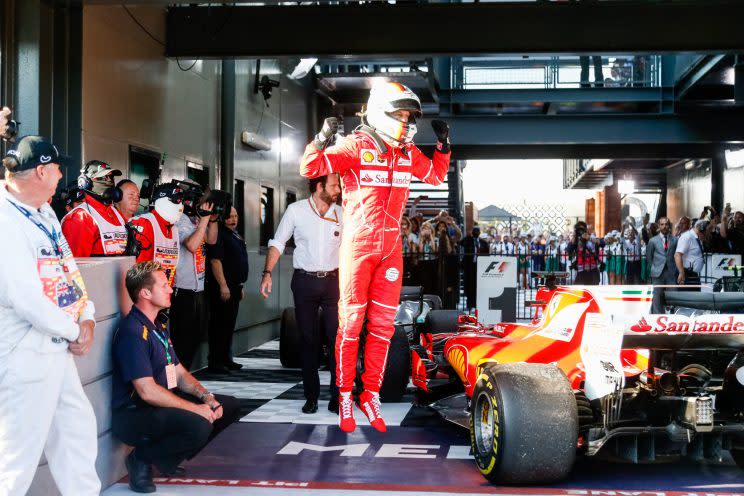
For more than a few fans of F1, the most significant bit of the Australian Grand Prix was the podium ceremony.
The German national anthem, followed by the Italian national anthem.
The opening race in the sport’s ‘new era’ harked back, in terms of the result, to those good or bad old days (pick a side) when Michael Schumacher and Ferrari were kings of all they surveyed.
Ferrari in 2017 may not be kings of F1 but, in their new offering, they do at least have a chance of wrestling the crown from Mercedes.
And, on the evidence of the Albert Park race, it’s a very good chance indeed.
So what have we learned from the opening round of the 2017 series?
READ MORE: Ferrari needed Melbourne triumph to send Mercedes message – Vettel
READ MORE: Full race report from Melbourne
Game on
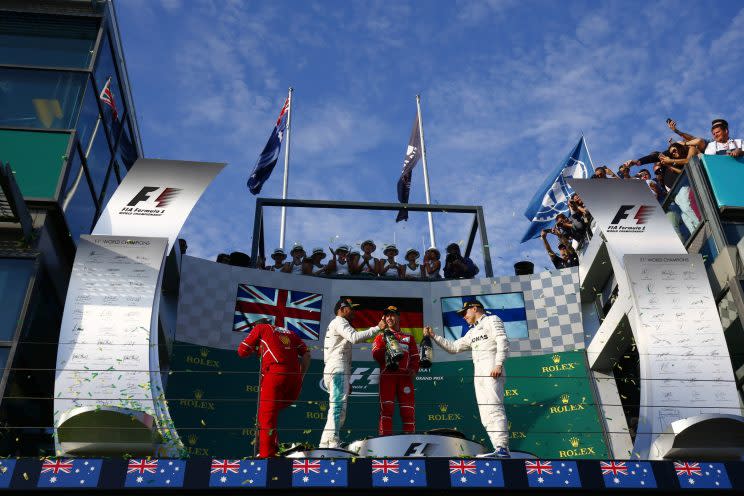
Mercedes are still fast. There’s nowhere to hide on qualification day and Lewis Hamilton showed that Merc power is still tough to beat.
But, having started on pole and led the first stint of the race, Merc couldn’t do anything to stop Vettel taking and holding on to the lead once the pitstop phase began.
This is perhaps the most significant thing to take away from the race. It’s not just that a Ferrari won, but that it won from second on the grid, second after the first corner, second until the tyre stops.
In recent years, there has been more than a passing correlation between whichever (Mercedes usually) driver is ahead after the first corner. But not in Melbourne.
Hamilton blamed tyre problems but it’s hard to believe that’s the only reason for Merc’s inability to hold on to the lead.
Even at peak domination, the Mercedes chariots have suffered a huge performance drop-off as soon as they’ve found themselves following another car.
It looks suspiciously like this problem has been exacerbated by F1’s new aero regulations.
Again and again, Hamilton made it clear that he was struggling, and that there was no chance of him executing an overtake not just on a Ferrari but even on Max Verstappen in his relatively lacklustre Red Bull.
Lap 23, for example: Hamilton is on new tyres, Verstappen on old rubber; Hamilton’s engine is pumping out more horses than Verstappen’s; Hamilton has topped the charts in qualifying and, up until now, in the race too.
But pass the Red Bull? His message to Mercedes is a clear: ‘I don’t know how you expect me to do that right now.’ Passing a Red Bull is impossible; as for passing Vettel…
Merc boss Toto Wolff was thumping the table in fury as he watched his team struggling, by their lofty standards.
On this showing, Mercedes might be advised to buy some reinforced furniture for the season ahead.
Finally, Ferrari, finally

So it’s true, then, Ferrari’s pre-season purple patch wasn’t unduly flattering to the team.
But it’s not just the fact that the Prancing Horses can pop in fast laps at will.
Of far more significance is the fact that they can stay in touch when they’re following another car, giving them a host of strategic options when it comes to pitstops.
And, with a single pitstop looking like it will be the norm this season, being able to maximise these potential gains will be of even more importance for anyone hoping to finish on the top of the podium.
Vettel looked to be comfortable following Hamilton in the early part of the race, even if overtaking wasn’t an option.
Once he got into clean air, he never looked to be under any pressure whatsoever.
Ferrari fans will be hoping the German was able to turn down the wick on his power unit, saving his engine for more challenging duels to come, and adding to the pressure on Mercedes. Mercedes, for their part, turned down Hamilton’s power settings as it became clear he was not going to challenge Vettel – such is modern F1 racing.
On the other side of the Ferrari garage, it was a less-than-stellar weekend for Kimi Raikkonen.
He struggled with understeer, although he was happier with the car’s balance once he went on to soft tyres.
Whatever the strategy differences between Raikkonen and Vettel, the Finn can only be disappointed to have finished back in fourth, well adrift of his team-mate and behind both the Mercedes.
That said, it would be foolish to write him off but, already, it’s clear that Raikkonen’s role is going to be helping Ferrari win the Constructors’ Championship rather than pushing for personal glory. No surprise but just a little sad.
Forza Felipe
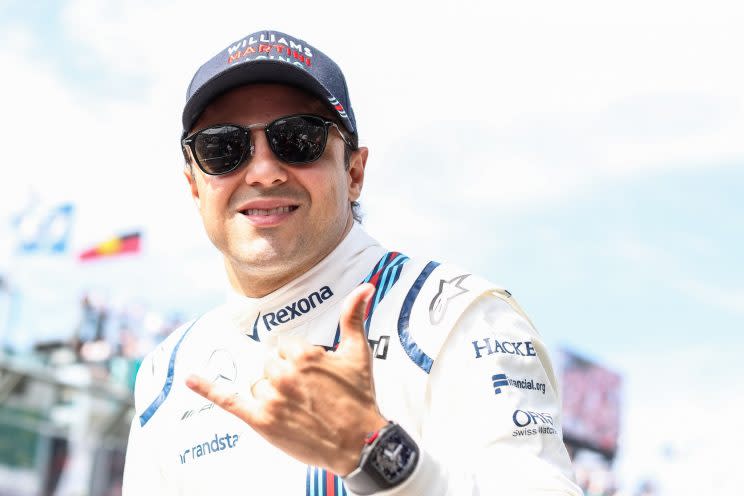
While Ferrari grabbed all the headlines, back in sixth place one Felipe Massa was showing that there’s life in the old dog yet.
Force India and Toro Rosso may have been impressing aplenty, but it was a Williams that came home best-of-the rest in the fascinating battle between F1’s midfield players.
While Williams’ newbie, Lance Stroll, retired after a fairly competent debut weekend, the Brazilian who came out of a brief (proper) retirement for the 2017 season garnered valuable first-race points for Williams.
If they can use the money that Stroll has brought their way to develop the car hard this season, we’ll be in for a fantastic battle in the midfield.
Force India also have a big sponsorship fund to help them develop their pink Panther mobile – their drivers both finished in the top ten, as did the Toro Rosso pairing.
Over at McLaren, Fernando Alonso had dragged his under-performing Honda engine into contention for a point or two before retiring with … well, with a heavy face and a terrible sense of foreboding for the season ahead, which may well be the last he can stomach.
His team-mate Stoffel Vandoorne finished 13th – but only because every car behind him had retired. It’s a mark of McLaren’s misery that even getting to the end of a race is quite an achievement at the moment, though.
Well done McLaren, fair play to you, do you still have the Mercedes engine factory on speed dial?
Exciting? That depends…
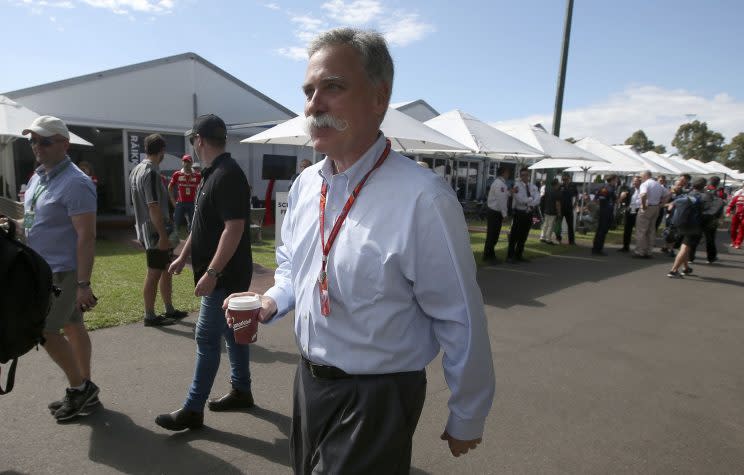
The new rules governing F1 have made cars faster, there is no doubt.
And, because they’ve helped Ferrari mount a challenge to Mercedes, things are definitely much, much more interesting at the front of the field.
But a casual observer would have been bewildered by the dearth of on-track action.
Albert Park is notorious for its lack of overtaking opportunities (there was less than one genuine overtake every two laps last year) but, if you strip out the ‘Vettel wins’ element of this year’s race, what on-track action was there for casual fans to enjoy?
An aborted start; a clean getaway despite the tricky new clutches; a minor first-lap bump between Magnussen and Ericsson; a racey overtake by Perez on Sainz on lap 20; a proper three-way battle for tenth place between Ocon, Alonso and Hulkenberg on lap 52.
That’s woeful, simply woeful.
There wasn’t even an appearance by the Safety Car, which usually gets a chance or two to strut its stuff at Albert Park.
For now, F1 can trade on the fight at the front of the field.
But, no matter how fascinating the behind-the-scenes stuff may be for hard-core fans, the lack of on-track action is potentially lethal for audience figures, particularly in North America where the sport’s new owners, Liberty Media, want to expand.
Before the race, Liberty head honcho Chase Carey said moves to improve things were more a three-year plan than three-race plan, but he and F1’s Head of Motorsports Ross Brawn have a huge job on their hands to put the racing back into F1 racing.
How long before we learn that the snow-plough front noses and other aero trickery on F1 cars are going to be slashed, with a return to heavier reliance on old-fashioned mechanical grip?
It can’t be right that there’s more on-track action during qualifying than the race itself, no matter how much faster the cars are going.
Fuel if you think it’s over

There may have been precious little overtaking but at least there was enough life left in the 2017 tyres for a whole host of drivers to push for fastest laps in the closing stages.
There was also, presumably, enough fuel left for a bit of a last-minute push.
Fuel management and engine management have always been elements of F1, and sometimes they’ve been ailments of F1, but things seem to have improved this year.
I say seem to because, with the processional nature of the Albert Park event, we’d not know if someone was in fuel-saving mode. It’s safe to assume everyone was watching engine use particularly closely, with only four units available to each driver for the 20-race season.
And I must admit to being a little surprised that F1’s stars didn’t seem a little more tired after wrestling their cars around a bumpy street circuit, in a year where the forces acting on drivers have increased sufficiently to merit changes to every driver’s training regime.
Still, it’s early days.
And finally, the local lad…
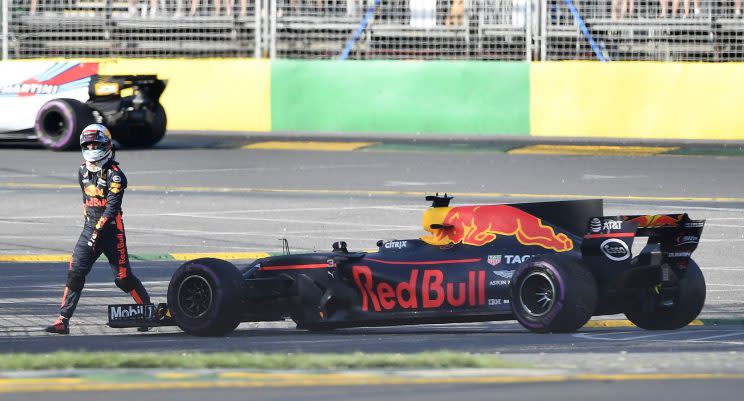
Aww, sod it. It wasn’t just Aussies who were gutted as Daniel Ricciardo’s weekend went on the floor, in the bin and into landfill.
A shunt on Saturday, a gearbox penalty, a car that failed to make the grid and then an engine failure. ‘Crap’ was how he described the weekend, which seems relatively restrained.
While his Melbourne miseries may have made headlines in Australia, of more concern is likely to be the gap between Red Bull and those Merc and Ferrari lads.
There’s a lot of work to do at Red Bull this year. Team principal Christian Horner has already conceded that he expects to use more than the allocated four engines in each car, and that doesn’t sound like championship-winning ambition.
Still, Red Bull do have the most exciting driver line-up and they’ll find a way of keeping us entertained.
Special mention for Antonio Giovanizzi, brought in at the last minute to replace Suaber’s Pascal Wehrlein, who is still recovering from a big shunt in the Race of Champions several months ago.
Giovanizzi played a blinder, frankly, with almost no time to prepare. Yes he retired but his qualifying was impressive and his race pace, in that sloth of a Sauber, was nothing to be ashamed of either.
I suspect we’ll be seeing more of him in the years ahead. As an aside, he’s the first Italian to have driven in F1 since back in 2011.
That, coupled with Ferrari’s resurgence, suggests that the tifosi may finally have a season to savour.
Book those tickets for Monza now.

 Yahoo Sport
Yahoo Sport 






































